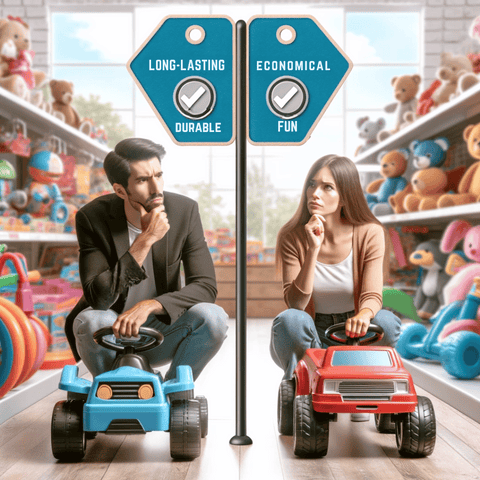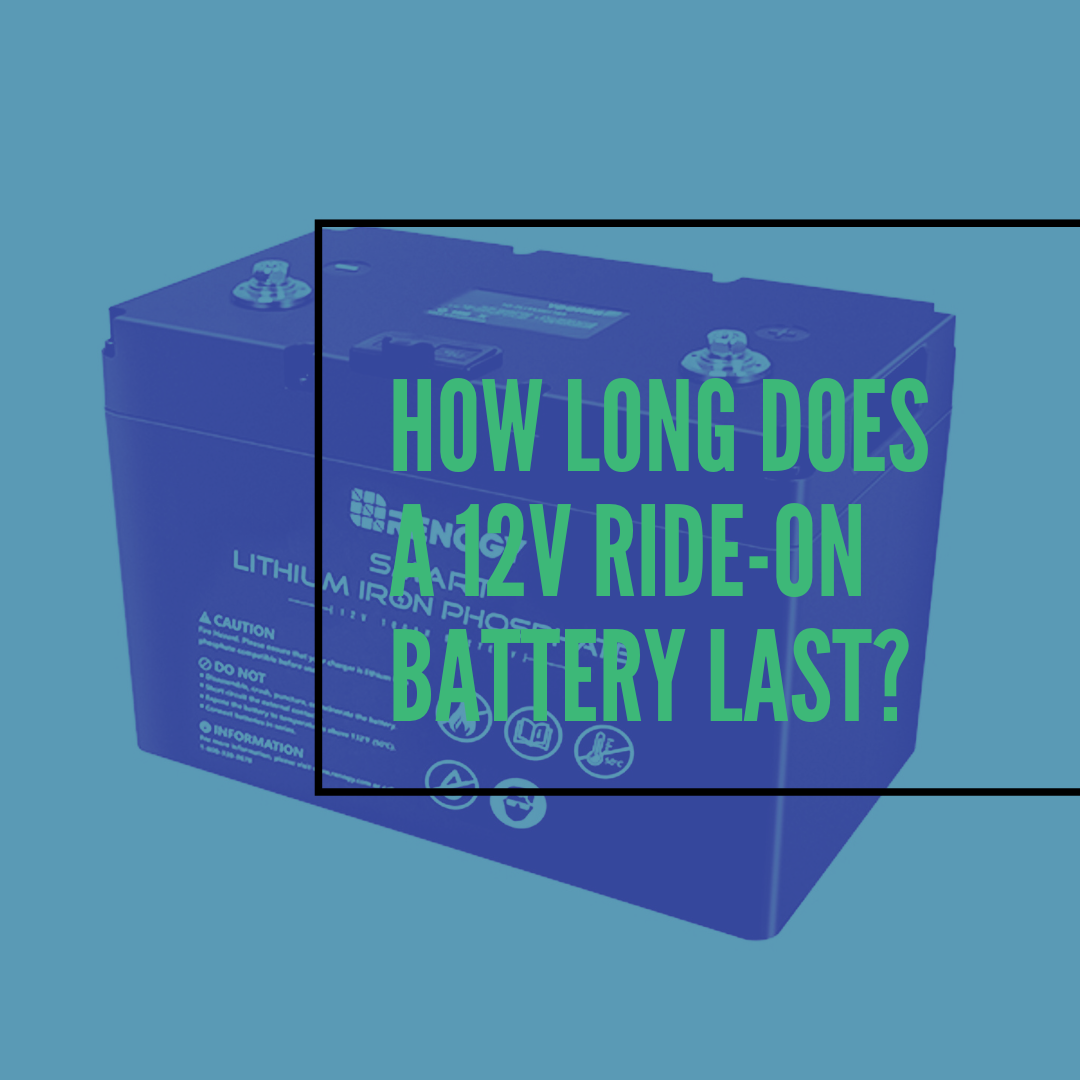Updated: 16.05.25
Ride-on toys like miniature cars and bikes bring endless joy to kids (and some adults too!). Powered by batteries, such as the RiiRoo 12V 10Ah Rechargeable Battery, these toys offer thrilling playtime. Understanding the lifespan of a 12V battery helps maximise fun and maintain performance.
 RiiRoo 12V 7Ah Lead Acid Battery, is a rechargeable power source for ride-on toys. The 12V voltage delivers the electrical force to propel vehicles, mimicking a real car for backyard adventures.
RiiRoo 12V 7Ah Lead Acid Battery, is a rechargeable power source for ride-on toys. The 12V voltage delivers the electrical force to propel vehicles, mimicking a real car for backyard adventures.
The Role of Voltage
Voltage determines a toy’s power and battery life. Higher voltage means more power but can shorten lifespan during continuous use. Learn more in our guide on ride-on toy durability.

2. Factors Affecting 12V Battery Lifespan
Several factors influence how long a 12V ride-on battery lasts:
Battery Capacity
Measured in ampere-hours (Ah), capacity indicates energy storage. A 7Ah battery offers shorter playtime than a 12Ah one but charges faster (6–8 vs. 8–12 hours). Balance playtime and charging needs for optimal performance.
Rider Weight
Heavier riders increase power demand, reducing battery life, similar to a car with more passengers using more fuel.
Terrain and Speed
Smooth surfaces like pavement use less power than grass or slopes. Higher speeds drain batteries faster, so slower drives extend runtime.
| Factor | Impact on Battery Life |
|---|---|
| Battery Capacity | Higher capacity (e.g., 12Ah) extends playtime but requires longer charging. |
| Rider Weight | Heavier riders increase power demand, shortening runtime. |
| Terrain and Speed | Rough terrain and high speeds drain batteries faster than smooth surfaces and slower drives. |
3. Battery Lifespan by Voltage
6V Battery
Used in smaller toys for younger kids, 6V batteries power 45 minutes to 1 hour of play, varying by toy design, rider weight, and terrain.
12V Battery
Found in larger toys for older kids, 12V batteries deliver about 1 hour of play, despite higher energy demands from advanced features and speeds.
24V Battery
Powering robust toys like the RiiRoo 24V 7Ah Battery, 24V batteries offer 1–2 hours of play but take longer to recharge.
4. Tips to Extend Battery Life
- Take breaks during play to let the battery rest.
- Maintain a regular charging schedule.
- Store batteries in a cool, dry place when not in use.
- Avoid overcharging to prevent damage.
Check our ride-on toy collection for compatible batteries and toys.
5. Troubleshooting Battery Issues
Common problems and solutions include:
- Toy Won’t Run: Recharge the battery. If it fails, replace it, as it may be depleted.
- Short Runtime: The battery may not hold a charge, indicating it’s nearing the end of its life.
- Slow Performance: Ensure full charging. Persistent issues suggest battery damage or wear.
- Swelling or Leaking: Replace defective or damaged batteries immediately for safety.
See our charging guide for more tips.
Conclusion
A 12V ride-on battery powers about 1 hour of fun, influenced by capacity, rider weight, terrain, and speed. Proper care ensures countless playtime adventures. Explore our ride-on toys and keep the excitement rolling!
Frequently Asked Questions
How long does a 12V ride-on battery last?
A 12V battery powers about 1 hour of continuous play, depending on capacity, rider weight, terrain, and speed.
Why isn’t my ride-on toy battery charging?
Check the charger and connections. If intact, the battery may be old or damaged and need replacement.
Can I leave a ride-on battery plugged in when not in use?
No, overcharging can damage the battery. Unplug it after a full charge to extend lifespan.
Can I use a 24V battery in a 12V ride-on toy?
No, a higher voltage battery can damage the toy’s system. Use the recommended battery, as explained in our 24V vs. 12V guide.
How can I maximise my ride-on battery’s lifespan?
Take breaks, charge regularly, store properly, and avoid overcharging to keep your battery in top shape.





Share:
A Step-by-Step Guide: How to Clean a Carburetor on Your Motorcycle
Go-Karting vs. Car Driving: How Go-Karting Skills Boost Safe Driving in 2025